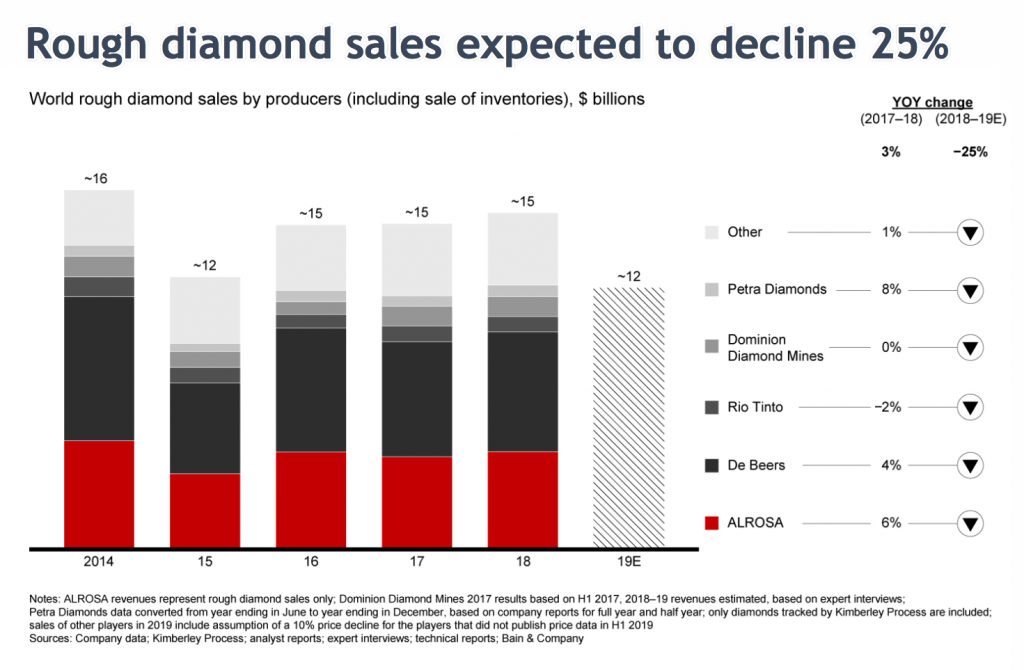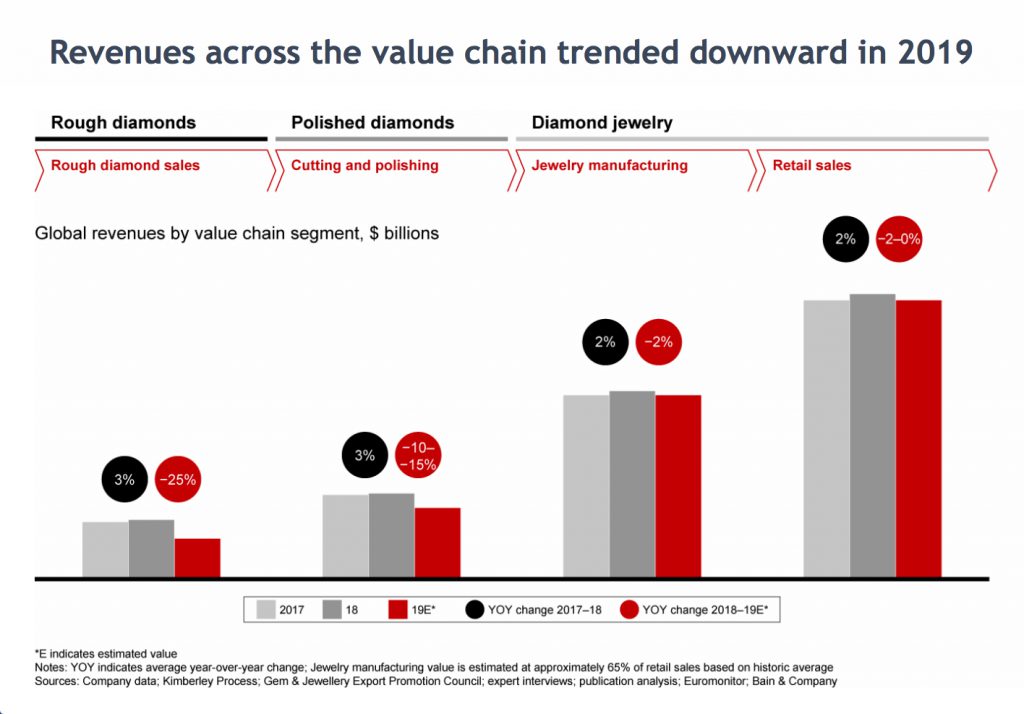De Beers’ rough-diamond sales declined 28% year on year to $355 million in February as the coronavirus hit demand.
Many sightholders took up the miner’s offer to delay buying goods destined for China, sources in the rough market told Rapaport News. The company let clients reject certain 1- to 2-carat rough diamonds and reschedule those purchases for later in the year.
The coronavirus has shut down retail in China, leaving manufacturers reluctant to buy goods they can’t sell. That has partly reversed an improvement in the market at the start of the year due to post-holiday restocking and positive data from domestic Chinese consumer sales. Cutters’ profit margins had also been rising slightly following De Beers’ rough-price reduction in November, sightholders explained.
“Sentiment was very confused [at the February sight],” a sightholder said. “De Beers corrected prices over the past three or four months, but because of the issue with the coronavirus, people are not sure what to do.”
Proceeds from the second sales cycle of the year were 36% lower than January’s $551 million, which was the highest tally since April 2019. The total includes last week’s sight in Botswana, as well as the company’s auction sales.
“Following an improvement in demand for rough diamonds during the first sales cycle of 2020, we recognized the impact of COVID-19 coronavirus on customers focused on supplying the Chinese market, and put in place additional targeted flexibility to enable customers to defer allocations of the relevant rough diamonds,” said De Beers CEO Bruce Cleaver.
De Beers’ sales have slid 9% year on year to $906 million for the two first two cycles combined. The next sight runs from March 30 to April 3.
Source: Diamonds.net












